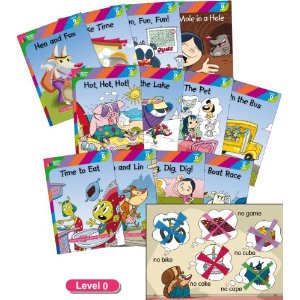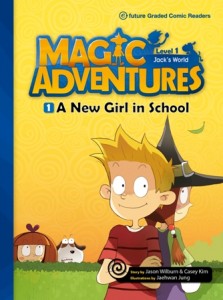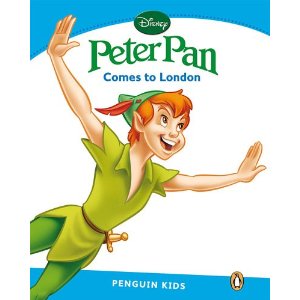Building Blocks Library curriculum EFL eikaiwa ES extensive reading junior high school kids Language learning materials phonics readers Reading Review reviews teaching
by sendaiben
5 comments
Review of MPI’s Building Blocks Library
Full disclosure: I was asked to write some additional readers for this series last year, and they just came out. I’ll try not to be too gushy in this review.
The Building Blocks Library, published by Matsuka Phonics Institute, is a ten level series with 82 titles. The first four levels are written as phonics readers to help students start reading, the ones after that are leveled readers for extensive reading.
The good:
- The same characters appear in many of the books, developing throughout the levels
- Ten levels means that students can move up through the series gradually and read at their level
- The artwork and production values are high and the books are attractive
- Each level comes with a CD of the books read aloud: the CD is well made and the voice acting is good
- Most of the books are interesting with varied story lines
- The series is reasonably priced, especially considering they come with CDs
The bad:
- There are not enough books at each level to meet student needs (this has been partially addressed with the new Level 0 and Level 1A sets, but schools will still need to supplement this with other materials)
- The difficulty outstrips the content at the higher levels, ie they are difficult for ordinary junior high school students to read even though the stories probably appeal to students that age the most
Overall:
This is a very nicely produced series that appeals to students and is economical and easy to integrate for schools. The main drawback is that there are not enough books at each level to allow students to move up the levels smoothly -ideally students would be doing much more reading at each level before moving up so teachers will have to supplement this with other materials.
eikaiwa iPhone kids Language learning materials online resources personal Review school management technology
by sendaiben
2 comments
Nexus 7 Tablet Review
The Nexus 7 tablet by Google and Asus was finally released in Japan last month. I am a huge Google fan and am looking for alternatives to the iPad for the classroom. It was too good an excuse, so I went ahead and ordered one.
My wife has an iPad 2, and I will be comparing the Nexus 7 to that, as well as to my iPhone 4S. This is my first Android device.
In brief: it’s great. I really like the 7″ form factor. It feels much lighter and easier to hold than the iPad, and at just under 20,000 yen, it is less than half the price of the new retina iPad.
The good:
- size and weight are much more user-friendly than the iPad
- screen is good with internet, ebooks, and movies
- Android OS is fast and fairly intuitive
- 2000 yen credit for the Google Play Store
- One movie and three books included
- Lots of Japanese content on the Play store, including ebooks
- E-reader includes an easy to use J-E/E-J dictionary
- Skype is really easy to use
- Not as many apps as iOS
- No Flash support! This is huge, as most of the websites I want students to use with this (WordEngine, Starfall) are flash-based
- Not as intuitive as iOS in terms of navigation, etc.
Overall:
I love this tablet. For reading ebooks, watching movies, carrying around with me, reading PDFs, accessing the Google online world (gmail, reader, drive, etc.) it is wonderful. I’m really glad I got it, and it will supplement my iPhone 4S for most of these tasks.
However, unless I can get around the lack of Flash support (there seem to be workarounds for it, but they are not official and involve some risks) we won’t be buying these for students to use in class. It’s a shame, as the smaller and lighter form factor would make them easier to use for children than iPads.
Basically, if you use Google sites like gmail, drive, and reader, if you read ebooks and need a tablet to take movies and music on the road with you, this could be ideal. As a classroom tool it is crippled by the lack of Flash support.
Anyone else tried the Nexus 7?
e-future Graded Comic Readers EFL ES extensive reading high school junior high school kids materials readers Reading reviews
by sendaiben
25 comments
e-future Graded Comic Readers: Magic Adventures
I just received my order of a full set of e-future Graded Comic Readers (Magic Adventures) and am, so far, extremely impressed.
The series consists of 18 comic books over three levels (200, 400, and 600 headwords). The story starts off in our world, then goes into Magic Land, then comes back to the real world. The characters are children and it has a real Harry Potter kind of vibe to it. The artwork is very nice, and the production values are high. They also have exercises and a glossary in the back.
Each book has a CD (not mp3 thankfully) with various tracks: theme song, the story, listen and read, listen and repeat, key words and expressions, then a great one: read the story using prompts, making them ideal for homework or self-study.
The books are comics, so feel very fresh. The students I tried them with today (elementary and junior high school) really liked them and so did I.
This is my find of the week: great, fresh, reading material at a reasonable price (set of 18 is just over 13,000 yen before discounts).
Another (great) video: Caine’s Arcade
This blog appears to have become some kind of knock-off Youtube channel. Fear not: I’ll have some more original content for you soon.
In the meantime, check out this video about a nine year-old boy who will probably end up being the next Bill Gates 🙂
EFL eikaiwa ES extensive reading kids language courses Language learning materials Penguin Kids Readers readers Reading Review reviews school management teaching
by sendaiben
4 comments
Penguin Kids Readers
Resuming our kids’ readers roundup after a brief hiatus 🙂
I received a set of these a couple of weeks ago from the publisher (thanks!). While I appreciate the gesture, it will not affect how I review them here.
Having said that, this is a fantastic new series that has a lot going for it. There are currently 23 readers over six levels of difficulty.
Level 1 (200 headwords)
Level 2 (400 headwords)
Level 3 (600 headwords)
Level 4 (800 headwords)
Level 5 (1000 headwords)
Level 6 (1200 headwords)
As you can see, the jump between levels is fairly minimal, something that is extremely important for beginner and younger readers.
The current titles are all based on Disney films, and the artwork and covers are beautiful. The writing isn’t bad, either, in that the books actually tell coherent stories. That is often a problem with low-level readers based on films or TV content -they try to fit in too much with a minimal wordlist so the stories end up not making sense. Luckily that is not the case here. In many of the books they have taken just one scene from a film and told that. Our students found the books really attractive due to the topics, but there was enough of a spread that they had not seen all of the movies featured.
Another thing I liked were the simple exercises in the back of the books. They have pre-reading and post-reading questions that are visual and fairly easy -perfect to do in class after reading or to check out of class reading. If anything, I would have liked to see this section be slightly longer.
Apparently the series will end up having twelve books at each level, and there will be different content in the next wave of books (ie not just Disney).
Overall, this is a fantastic new resource. We ended up ordering two more sets, and I’m really looking forward to the release of the rest of the books in this series.



